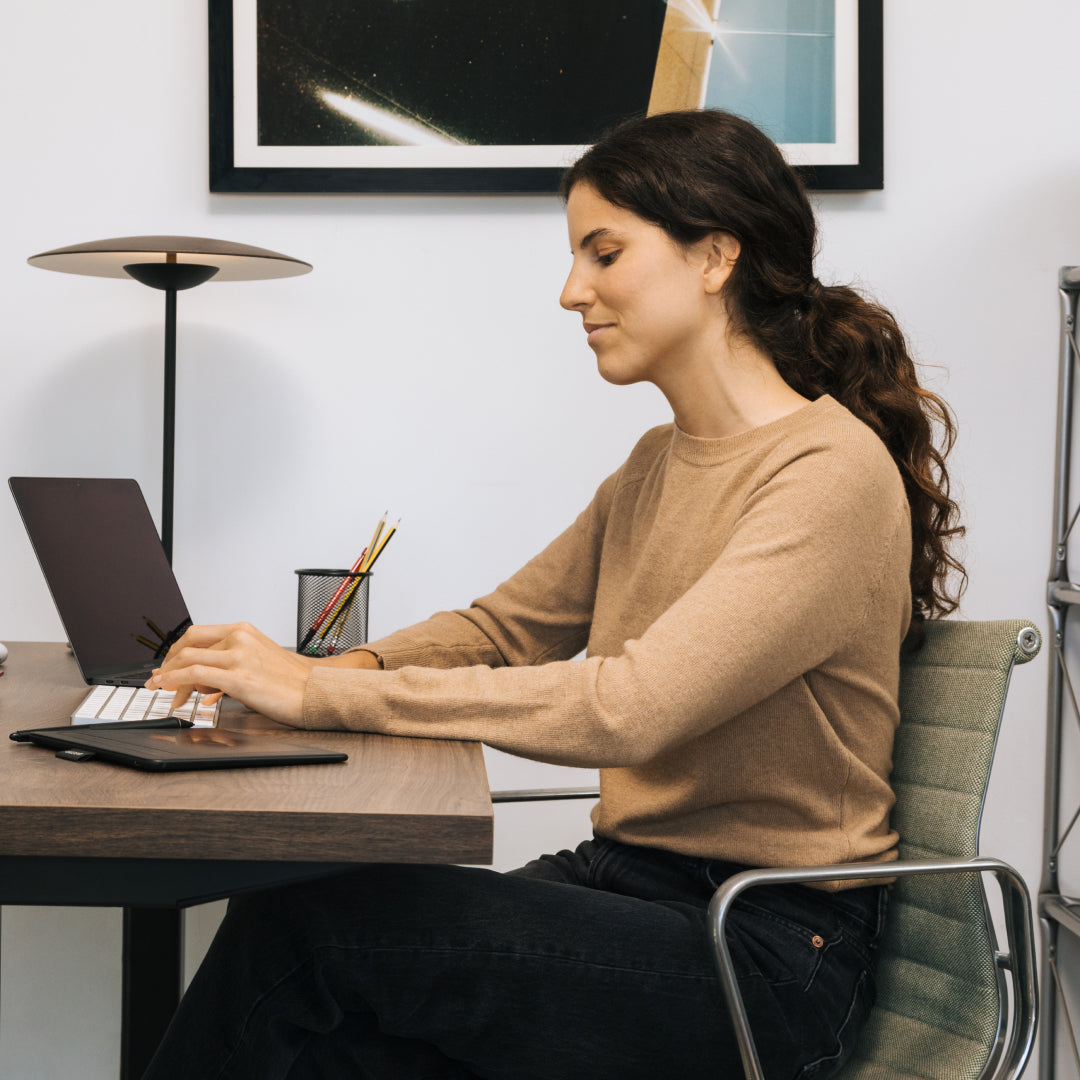Nowadays many people, such as office workers and students, spend long periods of time sitting. Many problems would be solved if the population knew the following premise: “no position is healthy when maintained for a long time.”
This is because by maintaining the same position for a long period of time, the tissues of our body release chemicals that can cause pain and discomfort. The release of these chemicals is mainly due to 2 factors:
1. The compression maintained on an area of our body. This can hinder blood circulation in this area.
2. Muscle fatigue . By not changing the position, the same muscle fibers that end up becoming fatigued always remain active. Sometimes, some fibers of our muscles can even remain active without our consent. This is what is popularly known as “contractures”, although at a scientific level it is not a correct name.
In this article we will focus on the most common pain and discomfort that sitting for a long time can cause, as well as preventing said symptoms .

What are the most common discomforts when spending a lot of time sitting?
These are the main diagnoses that physiotherapists encounter in our consultations:
MUSCLE PAINS:
-
Cervical pain and pain in the area of the scapulae: due to sustained muscle contraction when the position of the neck and shoulders does not vary.
-
Muscle pain in the abdomen: due to sustained contraction of the abdominal area, related to the maintained position.
-
Lumbar pain: also due to this sustained contraction of the muscle when having to keep the trunk upright in the same position.
-
Gluteal pain: Both due to the compression of the gluteus against the chair, and due to a sustained muscle contraction derived from that compression.
-
Pelvic floor myofascial syndrome: Both due to compression and sustained contraction. Involvement of this area can cause genitourinary symptoms and abdominal discomfort.
PAIN IN THE SACRO-ILIAC JOINT:
Bone involvement in this joint does not usually occur unless you suffer from a rheumatic disease. Therefore, symptoms are usually due to alterations in the gluteus and sacroiliac ligaments. These may be due to the stress they are subjected to by spending a lot of time in contact with the chair.
CIRCULATORY PROBLEMS:
Sitting for long periods can hinder venous return. This can cause fluid retention, heaviness, and pain or discomfort in the legs.
NERVOUS SYSTEM PROBLEMS:
-
Deep gluteal syndrome: It is often confused with “sciatica.” What happens is that when we spend a lot of time sitting, compression and muscle contractions increase in the deep part of the gluteal area. This causes the release of substances that irritate the sciatic nerve and other nerve endings, causing pain and/or discomfort.
BURSITIS:
Our body has a fluid pocket that sits between the bone and the buttock to reduce friction between them. Sitting for a long time can cause inflammation of this bag, which can cause pain.
Factors that can perpetuate these ailments
It is very important to keep in mind that there are factors that can perpetuate these ailments:
-
Furniture that cannot be adapted.
-
Overuse of muscle groups due to maintained positions.
-
Constant compression in the same points by maintaining the same position for a long time.
-
Stress, which increases muscle tone in an involuntary and unnecessary way.
SOLUTION
All of these problems can be easily solved with these 2 simple ergonomic interventions:
1. Physical changes in the workplace: Probably the most interesting change that can be made is to implement a lifting desk. These desks have the possibility of changing their height so that the user can take different positions, from sitting to completely standing. This change in position will not only increase caloric expenditure a little, but it will change the position of practically all the joints in our body and relieve areas of compression. Additionally, from a standing position, it is easier to perform some exercises or take a few steps from time to time.
2. Movement breaks: Every 20 or 30 minutes, take 1 or 2 minutes of rest to do simple strength exercises (squats, heel raises, etc.), walk, or do mobility exercises (such as rotating the neck and shoulders) . Additionally, during longer rest periods, you can take advantage of it to go for a walk.

KEY POINTS
-
Spending a long time sitting causes compression and sustained muscle contractions. This releases chemicals that can cause discomfort or pain. For this reason, no position is healthy when held for a long time.
-
The most common problems that physiotherapists find in office workers and students are muscle, joint, circulatory, nervous and bursa problems.
-
Establishing elevating tables and movement breaks is the best intervention to alleviate these problems.
BIBLIOGRAPHY:
Itza, F., Zarza, D., Serra, L., Gómez-Sancha, F., Salinas, J., & Allona-Almagro, A.. (2010). Pelvic floor myofascial pain syndrome: a very common urological pathology. Spanish Urological Acts, 34(4), 318-326. Recovered on December 4, 2023, from http://scielo.isciii.es/scielo.php?script=sci_arttext&pid=S0210-48062010000400003&lng=es&tlng=es.
Soares C, Shimano SGN, Marcacine PR, Fernandes LFRM, de Castro LLPT, de Walsh IAP. Ergonomic interventions for working in a sitting position: an integrative review. Rev Bras Med Trab. 2023 Apr 18;21(1):e2023770. doi:10.47626/1679-4435-2023-770. PMID: 37197350; PMCID: PMC10185389.
Elorza NA, Bedoya Ortiz M, Díaz Viloria JE, González Ríos MA, Martínez Rendón E, Rodríguez Echeverri M. Sitting or sitting for a long time: ergonomic risk for exposed workers. Rev CES Public Health. 2017; 8 (1): 134-147.
-
E. Mejía, M. Arias, K. Valdez, S. Carrillo, G. Infante. Sacroiliac joint pain. Anatomy, Diagnosis and Treatment. Rev. Soc. Esp. Pain. 2008. 3: 170-180.
Kizaki K, Uchida S, Shanmugaraj A, Aquino CC, Duong A, Simunovic N, Martin HD, Ayeni OR. Deep gluteal syndrome is defined as a non-discogenic sciatic nerve disorder with entrapment in the deep gluteal space: a systematic review. Knee Surg Sports Traumatol Arthrosc. 2020 Oct;28(10):3354-3364. doi:10.1007/s00167-020-05966-x. Epub 2020 Apr 3. PMID: 32246173.
Johnson DB, Varacallo M. Ischial Bursitis. 2023 Aug 4. In: StatPearls [Internet]. Treasure Island (FL): StatPearls Publishing; 2023 Jan–. PMID: 29493912.

